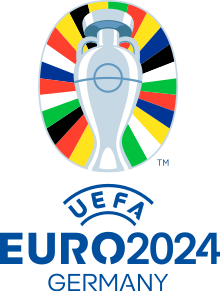Slovenia vs Serbia Predictions, Betting Tips and Match Previews. Slovenia face Serbia at Allianz Arena in Munich, Thursday, as both teams vie for a last-16 Euro 2024 spot. Read on for our free Euro 2024 predictions and betting tips.


European Championship | Group Stage – Jun 20, 2024 at 2pm UK at Allianz Arena

Don’t have a BetVictor account? Click below to claim this offer👇
Slovenia vs Serbia Predictions
Key Stats
– Slovenia have averaged 2 goals per game in the European Championship qualifiers.
– Serbia have a higher average possession rate at 62.4% compared to Slovenia’s 55.4%.
– Serbia have won an average of 5.9 corners per game in the qualifiers, indicating their attacking intent.
Will Slovenia and Serbia Share the Spoils in Munich?
Two Group C teams on the hunt for their first win in the Euro 2024 tournament, Slovenia and Serbia, clash at the Allianz Arena in Munich on Thursday. Both sides, who were unable to secure victories in their opening group matches, are separated by a single point in the standings. This match is pivotal for their chances of advancing to the knockout stages.
Match Preview
Slovenia, making their first European Championship appearance since 2000 and their first major tournament appearance since the 2010 World Cup, commenced their Euro 2024 campaign with a 1-1 draw against Denmark. The Danes took the lead with a well-executed goal by Christian Eriksen. However, Slovenia managed to level the score 13 minutes from time through Erik Janza’s deflected strike.
Head coach Matjaz Kek deemed the draw a fair result, acknowledging his team’s strong finish. Slovenia are currently ranked 57th in the world by FIFA and are still chasing their first victory in the European Championship as an independent nation. Their previous encounter with Serbia ended in a 2-2 draw in the UEFA Nations League in June 2022.
Serbia, participating in the European Championship for the first time as an independent nation, suffered a narrow 1-0 defeat to England in their opening Group C fixture. Despite a spirited second-half performance, Serbia couldn’t break down the English defence. Manager Dragan Stojkovic praised his players’ bravery, highlighting their efforts against a team ranked significantly higher in the FIFA standings.
Serbia’s record in European Championship fixtures is not impressive, having won just one of their last 12 matches in the tournament. A victory against Slovenia is crucial to keep their hopes of progressing alive, especially with a challenging match against Denmark looming.
Team Analysis
Slovenia’s lineup is expected to remain unchanged from their draw against Denmark. Key players include Jan Oblak in goal, who will be shielded by a back four comprising Jaka Bijol, Vanja Drkusic, Zan Karnicnik, and Erik Janza. In midfield, Adam Gnezda Cerin and Timi Max Elsnik are likely to feature prominently, while Benjamin Sesko and Andraz Sporar will lead the attack.
For Serbia, the injury to Filip Kostic necessitates changes, with Filip Mladenovic set to step in at left wing-back. Sasa Lukic and Nemanja Gudelj are expected to anchor the midfield unless Sergej Milinkovic-Savic is deployed in a deeper role, allowing Dusan Tadic to assume a more advanced position. The forward duo of Aleksandar Mitrovic and Dusan Vlahovic will be crucial for Serbia’s attacking aspirations.
Tactical Approaches
Slovenia’s approach will likely focus on defensive solidity and counter-attacks, leveraging the pace and finishing ability of Sesko and Sporar. With a strong finish against Denmark, Slovenia will aim to maintain their resilience and exploit Serbia’s defensive vulnerabilities.
Serbia, on the other hand, will seek to dominate possession and create scoring opportunities for Mitrovic and Vlahovic. Their midfield, led by the creative Tadic, will be tasked with breaking down Slovenia’s defensive lines. Given their performance against England, Serbia will need to be more clinical in the final third to secure a vital win.
Expected Lineups
Slovenia
Oblak; Karnicnik, Blazic, Bijol, Janza; Stojanovic, Gnezda Cerin, Elsnik, Mlakar; Sporar, Sesko
Serbia
V. Milinkovic-Savic; Veljkovic, Milenkovic, Pavlovic; Zivkovic, S. Milinkovic-Savic, Gudelj, Mladenovic; Tadic; Vlahovic, Mitrovic
With these lineups, Slovenia are expected to maintain a disciplined defensive setup, relying on counter-attacks, while Serbia will aim to control the game through possession and creativity in the midfield.
Tactical Analysis: Deep-Dive
Offensive and Defensive Strategies
In their recent matches, Slovenia and Serbia have adopted distinct approaches both offensively and defensively. Slovenia, under Matjaz Kek, have emphasised a balanced game, often prioritising defensive solidity while utilising quick counter-attacks. Against Denmark, Slovenia’s defence, marshalled by Atletico Madrid’s Jan Oblak, demonstrated resilience. The back four of Jaka Bijol, Vanja Drkusic, Zan Karnicnik, and Erik Janza remained compact, particularly in the second half, which allowed them to stifle Denmark’s attacks and eventually led to Janza’s equaliser.
Offensively, Slovenia rely heavily on the pace and technical ability of Benjamin Sesko. His movement and ability to find spaces between defenders have made him a constant threat. In their draw against Denmark, Sesko’s positioning and pressing caused significant problems for the Danish defence. Alongside him, Andraz Sporar provides a physical presence, often holding up play and bringing midfielders into the attack.
Serbia, under Dragan Stojkovic, have shown a more aggressive approach. Despite their loss to England, Serbia displayed attacking intent, particularly in the second half where they increased pressure on the English defence. Their formation allows for fluid transitions, with wing-backs like Filip Mladenovic pushing high up the pitch to support the attack. In defence, Serbia relies on the organisational skills of their experienced defenders such as Nikola Milenkovic and Strahinja Pavlovic.
However, Serbia’s defensive structure showed vulnerabilities against England, particularly in handling quick transitions. Their midfield, featuring players like Nemanja Gudelj and Sasa Lukic, is tasked with both disrupting the opponent’s play and initiating attacks. This dual role sometimes leaves gaps, which was evident as England found spaces to exploit, though Serbia’s defensive trio managed to keep the scoreline respectable.
Key Player Performances
For Slovenia, Jan Oblak’s role cannot be overstated. His leadership from the back and crucial saves, such as against Denmark, have been instrumental. Benjamin Sesko’s performances have been notable, showcasing his potential as a future star. His goal-scoring ability and work rate make him a pivotal figure in Slovenia’s attack.
In Serbia’s camp, Dusan Vlahovic has been a standout performer. Despite a lack of service against England, his movement and ability to create chances were evident. Vlahovic’s pressing and physical presence have made him a key component of Serbia’s forward line. Additionally, Dusan Tadic, when deployed, provides creative spark and experience, crucial for Serbia’s attacking dynamics.
Managerial Impact
Matjaz Kek’s management has instilled a disciplined and resilient approach in Slovenia. His ability to adapt tactics mid-game was evident in their draw against Denmark, where his team improved significantly in the second half. Kek’s focus on building a solid defensive foundation has been key to Slovenia’s unbeaten run in their recent international fixtures.
Dragan Stojkovic’s influence on Serbia is characterised by a more attacking philosophy. He encourages his team to play with bravery and press high, as seen in their match against England. However, his tactical setup sometimes leaves the defence exposed, a criticism that has been levied against his management. Stojkovic’s challenge is to find a balance between attack and defence to ensure his team can sustain their pressure without being vulnerable to counter-attacks.
Expected Goals Analysis
Analysing expected goals (xG) for both teams offers insight into their attacking effectiveness. Slovenia have averaged 2 goals per game in their qualification campaign, suggesting they create and convert chances efficiently. Their ability to score from various situations, including set-pieces and open play, highlights their tactical versatility.
Serbia, with an average of 1.9 goals per game, have also shown prowess in front of goal. Their expected goals suggest a high level of creativity and finishing ability, primarily driven by the likes of Vlahovic and Mitrovic. However, their actual goals scored against higher-ranked teams like England indicates a need for better conversion of chances.
Tactical and Performance Comparison
Tactically, Slovenia and Serbia present contrasting styles. Slovenia’s pragmatic approach focuses on defensive stability and structured attacks. Their possession statistics (55.4%) indicate a balanced style, aiming to control the game and strike on the counter.
Serbia’s tactics involve high pressing and aggressive forward play. Their higher possession rate (62.4%) and greater number of shots per game (14.4) reflect this strategy. However, this also leads to more possession losses and defensive lapses, as seen in their match against England.
In terms of player performances, Slovenia’s key players like Jan Oblak and Benjamin Sesko have been consistent, providing both defensive assurance and attacking flair. Serbia’s stars, Vlahovic and Tadic, offer significant attacking potential, but their performances are sometimes hindered by the team’s defensive vulnerabilities.
Suggestions for Improvement
For Slovenia, the key area of improvement lies in their attacking consistency. While their defence has been solid, they need to ensure more consistent delivery and finishing in the final third. Integrating midfielders like Adam Gnezda Cerin and Timi Max Elsnik into more advanced roles could help create additional scoring opportunities.
Serbia, on the other hand, must address their defensive organisation. Stojkovic needs to balance his attacking tactics with a more cohesive defensive structure. Enhancing the midfield’s defensive responsibilities and ensuring better support from wing-backs in transition could mitigate their defensive weaknesses.
Strengths and Weaknesses
Slovenia’s strength lies in their defensive organisation and resilience. Jan Oblak’s goalkeeping and the defensive unit’s cohesion provide a solid foundation. However, their conservative approach can sometimes limit their attacking potential, relying heavily on counter-attacks and individual brilliance from players like Sesko.
Serbia’s attacking prowess is their main strength. Players like Vlahovic and Mitrovic offer considerable firepower. Yet, their aggressive tactics often leave them exposed at the back, as seen in their match against England. The lack of defensive discipline and over-reliance on attacking midfielders to cover defensive duties is a significant weakness.
Managerial Critique
Matjaz Kek’s pragmatic approach has brought stability to Slovenia, but it sometimes lacks the attacking dynamism needed to secure victories against stronger opponents. His emphasis on defence can be criticised for being overly cautious, potentially stifling the team’s attacking potential.
Dragan Stojkovic, while praised for his attacking mindset, often neglects the defensive aspects of the game. His tactical naivety in balancing attack and defence has been evident, as seen against England. This aggressive approach, while entertaining, risks defensive frailty and inconsistency, drawing heavy criticism for not adapting tactics to the opponent’s strengths.
Predictions
Best Bet: Draw
A draw appears to be the most probable outcome for this match between Slovenia and Serbia. Both teams have shown similar form in their recent fixtures, with Slovenia drawing their opening match against Denmark and Serbia narrowly losing to England. Slovenia demonstrated resilience by coming back to secure a 1-1 draw against Denmark, while Serbia, despite their loss, displayed commendable defensive solidity and organisation against a formidable English side.
Historically, matches between these two teams have often ended in stalemates, including a 2-2 draw in their last meeting in the UEFA Nations League. Given their current form and the importance of not losing this fixture, a draw would be a sensible prediction. Both teams possess the defensive capabilities to hold each other at bay, and their need to avoid a loss might result in a cautious approach.
Correct Score: 1-1
The prediction of a 1-1 draw aligns well with the overall form and defensive records of both teams. Slovenia have averaged 2 goals per game in their qualification matches, while Serbia have scored 1.9 goals per game. However, both teams have also shown vulnerabilities at the back, with Slovenia conceding an average of 0.9 goals per game and Serbia 1.1 goals per game.
Given these statistics, it is reasonable to expect both teams to find the net once. Slovenia’s ability to claw back against Denmark and Serbia’s spirited performance against England suggest that both sides have the firepower to score, but their defensive structures are likely to prevent a high-scoring affair.
Goalscorer: Benjamin Sesko
Benjamin Sesko, the young Slovenian forward, stands out as a strong candidate to score in this match. With 11 goals in 30 international appearances, Sesko has been a consistent threat in the attacking third. His performance against Denmark, where he looked dangerous around the penalty area, underscores his potential to make a significant impact against Serbia.
Sesko’s ability to exploit defensive lapses and his clinical finishing make him a key player for Slovenia. Given Serbia’s defensive vulnerabilities, particularly in their narrow defeat to England, Sesko has a good chance of finding the net at least once in this crucial encounter.
Corner Prediction: Serbia to Win More Corners
Serbia have averaged 5.9 corners per game in their qualification campaign, compared to Slovenia’s 3.8 corners per game. This higher average suggests that Serbia are more likely to dominate in terms of corner kicks. Serbia’s attacking style, characterised by frequent wing play and crosses into the box, often results in a higher number of corners.
Their need to secure a win to stay in contention for the knockout stages will likely see them pressing forward more aggressively, thereby increasing their chances of winning corners. Slovenia, while capable of counter-attacking, are expected to adopt a more defensive approach, limiting their opportunities to win corners.
Shots on Target: Dusan Vlahovic
Dusan Vlahovic is expected to register at least one shot on target in this match. The Juventus forward has been a bright spark for Serbia, consistently getting into good positions and creating scoring opportunities.
In the match against England, Vlahovic was one of the few Serbian players who managed to test the opposition goalkeeper. His ability to find space and his powerful shooting make him a constant threat. With Serbia needing a win, Vlahovic is likely to be at the forefront of their attacking efforts, ensuring he gets opportunities to shoot on target.
Yellow Card: Nemanja Gudelj
Nemanja Gudelj, known for his physical style of play and defensive duties, is a likely candidate to receive a yellow card. His role in breaking up opposition play often puts him in situations where he needs to commit tactical fouls.
In high-stakes matches such as this, where both teams are fighting for progression, Gudelj’s aggressive approach could easily result in a booking. His track record and playing style suggest that he is prone to receiving yellow cards, making this a reasonable prediction.
Assist Prediction: Dusan Tadic
Dusan Tadic is well-placed to provide an assist in this match. As Serbia’s primary playmaker, Tadic’s vision and passing ability are crucial to their attacking strategy. His capacity to deliver precise through balls and crosses creates numerous goal-scoring opportunities for his teammates.
With strikers like Mitrovic and Vlahovic ahead of him, Tadic has reliable targets to convert his passes into goals. Given his role and importance in the Serbian team, Tadic is likely to be involved in any goals they score, making him a strong candidate for an assist.
Innovative Market: Total Team Shots on Target Over/Under
An intriguing market for this match is the total team shots on target for Serbia. With an average of 4.6 shots on target per game, predicting that Serbia will have over 4 shots on target is a compelling proposition. Given their need to win and their attacking potential, Serbia are expected to push forward aggressively.
This will likely result in multiple attempts on goal, with players like Vlahovic, Mitrovic, and Tadic taking shots. Slovenia’s defence, while resilient, is likely to face sustained pressure, leading to several shots on target from the Serbian side. This market offers a promising betting angle considering Serbia’s offensive statistics and tactical approach.
Top UK Bookies & Best Sign Up Offers
Subscribe To Our Newsletter For Exclusive Tips
Want to have exclusive tips from experts tipsters delivered right into your inbox? Subscribe Now To Our Newsletter. We will never spam, we fully respect your privacy!

























